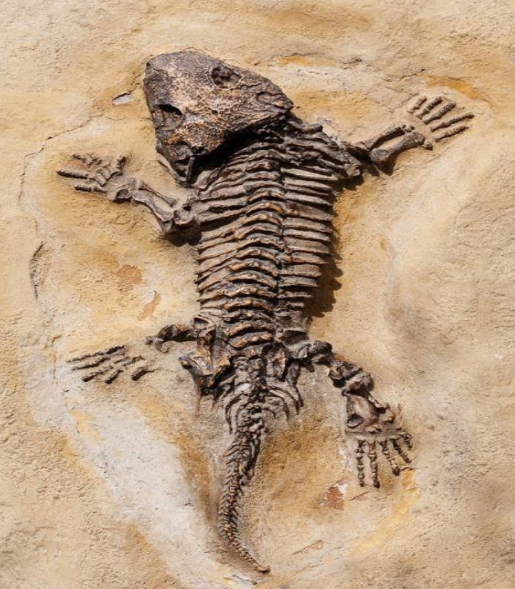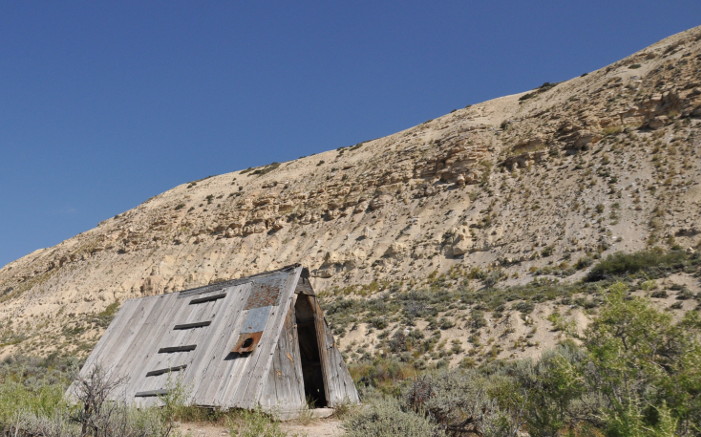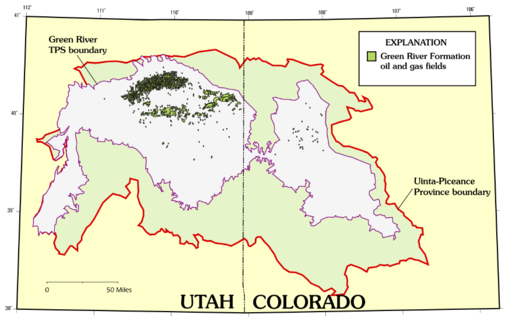
Green River Formation – Overview
The Green River Formation is a geological pattern that records the Eocene‘s details (a period on the Earth that lasted from 56 to 33.9 million years ago). This fossil formation records evidence of life in a collection of lakes between mountains in three basins, known today as the Green River that flows in Utah, Wyoming, and Colorado.
Throughout its far-fetching lifetime, this water system is home to the largest accumulations of lake sediments and fossils worldwide. It extends for more than 25,000 square miles and reaches a depth of 2,000 feet or more; the Formation includes 14 different members (represented by different places in location and time).
The sediments on the river bed are deposited in ultra-fine layers. Each layer has a dark covering along with a light-hued inorganic layer of sediment. Each pair of layers is known as a varve, which reflects different years.
Green River Formation – Members

Being the smallest and shortest-lived on the Green River Lakes, the Fossil Lake was preserved for two million years and is marked by three sedimentary Members.
- The Angelo Member – The Angelo member is the youngest member of the Green River Formation. It was too salty to allow aquatic life, so it contains the least remains.
- The Fossil Butte Member – The Fossil Butte member is sandwiched between the two members; Angelo and Road Hollow. It contains a record of a more significant number of aquatic species, including plants and animals. While it only represents a few tens of thousands of years, this member’s sediments contain the richest record of fossils from various aquatic organisms. The evidence from this member is greater than all the other Green River Members combined.
- The Road Hollow Member – The oldest and thickest member representing Fossil Lake’s formation as it grew and deepened.
Green River Formation – Layers
While there are several layers within each member, there are two layers that are most productive; “18-inch bed” and the “sandwich bed.” The sediment deposits in this layer have records of life in shades of dull and dark, with bones of fish turning black and the scales remaining grey.
On the other hand, the “sandwich bed” is around 6.6 feet thick and holds a record of near-shores species typically fossilized in the shades of orange and brown.
When you look at the fossils from the two layers combined, you find evidence of various wildlife that has been uniquely persevered by nature.
Green River Formation – How was it Formed?

A Biosphere of Nature
Interestingly enough, the following is a perfect example of the formation of how ecospheres materialize through the wonders of nature.
The evidence of life from the Eocene has its own story to tell from an era that began around 50 million years ago. Green River Formation fossils reflect a time when the landscape formation was complete and mountains and plains were separate. And since the streams of water were draining into the lakes, they carried large amounts of sand, mud, minerals and silt. Over time, as the sediments continued to fill in the lakes, it altered the lake waters’ chemical composition. As a result, it became the breeding ground for a variety of plant species.
Enter Coal and Oil

The climate of the Green River at that time was warm and moist, which further facilitated plant growth; creating a dense community of vegetation; subsequently providing a continuous supply of leaves, seeds and branches.
Plant debris in the lake was protected by the swamp’s water cover that continued to grow thicker over time. With immense pressure for millions of years, the plant debris has now transformed into coal. Moreover, as the blue-green algae continued to thrive in the lake, it spread over different parts and formed thick scum which eventually sank to the lake’s bottom. Over time, the algae-rich sediments transformed into the largest oil shale resource on the planet.
Types of Fossils Found in the Green River Formation
Green River Formation is home to fossils in a variety of shapes and sizes. You can find evidence of life in the form of intact fossilization (where the entire body of the species is intact), and you can also find fossils as fragments of a different part of the body.
A possible explanation of this variation includes lake currents and the body’s state before fossilization and changing conditions within the lake system.
A specific species that we can look into is fish. You can find evidence of fossils within the Green River lakes ranging from complete disintegration to fully intact skeletons. In some species, there is evidence of fossilization with food still inside the body of the species. The variety of fossils indicate the environment inside the lakes continued to change throughout the Eocene.
What Makes Green River Formation Unique?
The Green River Formation fossils are one of the best-known sites for getting an insight into the Eocene. It gives exact information into what life was like millions of years ago. It contains evidence of hundreds of individual fish of different shapes and sizes.
Additionally, fossil plants are abundant, including ferns, palm leaves and sycamore leaves, indicating the possible plant species along the lakesides. Fossils of various other species, including mammals, snakes, turtles, birds, bats, birds and crocodiles have also been found in the Green River Formation, depicting the possible variety of more advanced species in the region millions of years ago.
Given its wide variety of fossils, Green River Formation is one of the best-known sites for paleontologists worldwide.
